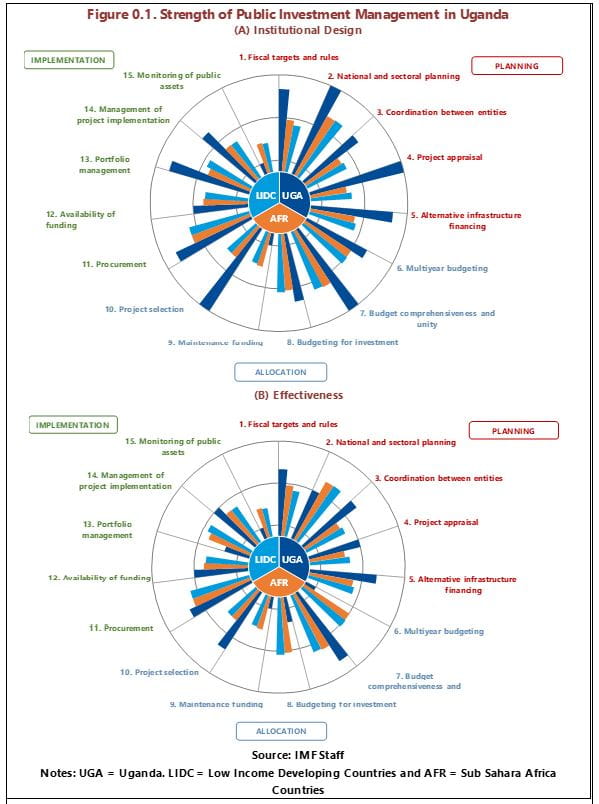The Ugandan authorities have agreed to publish the results of the recent Public Investment Management Assessment (PIMA) carried out by the IMF. The PIMA is a standard IMF tool that has been applied in more than 80 countries, but only 23 reports have been published so far. Countries are encouraged to share these assessments with others, and the Uganda PIMA includes a wealth of information and analysis that will be of great interest to other countries. The report can be found on the website of the Ministry of Planning, Finance and Economic Development: https://www.finance.go.ug/publication/uganda-public-investment-management-assessment-report.
Uganda has achieved significant improvements in public investment management (PIM) over the last few years. The government has implemented several important reform measures. These include giving the Development Committee a strong role as a gatekeeper for new investment proposals, the establishment of a Projects Analysis and Public Investment Department (PAP), and development of a draft public investment policy, as well as guidelines and manuals to improve the quality of project preparation and appraisal. While the government has been in the driver’s seat in these reforms, the IMF and other development partners have contributed actively in designing and implementing them, and we believe this support has been very productive.
As a result of the reform process, Uganda is now well ahead of its comparators in many aspects of PIM, in particular in institutional design – the formal framework for infrastructure investment. In the PIMA, Uganda receives high scores on institutional design for eight institutions: fiscal rules, national and sector planning, project appraisal, alternative infrastructure financing (the private sector, PPPs, and public corporations), budget comprehensiveness, project selection, procurement and portfolio monitoring. This is a very strong result compared to other countries that have undertaken a PIMA. The chart summarizes the main results of the PIMA and compares Uganda with other countries in the region and low-income developing countries.
However, many of the reforms are recent, many of them are still not fully institutionalized and the effectiveness of PIM is therefore lower than the institutional design. These remaining weaknesses have negative impacts on public investment access and quality. The PIMA noted that project delays are still common, in particular for externally funded projects. This is due to weak project planning and development practices, as well as the lack of a clear legal framework for resolving land use issues.
Given that effectiveness is lagging institutional design, there is a clear need to further strengthen PIM in Uganda. The high level of public investment and the plans for continued, rapid expansion of public infrastructure exacerbates the importance of effective and efficient investments.
The PIMA provides a set of recommendations that aim at consolidating the existing PIM reforms and rectifying the areas that have been lagging. In this context, it will be particularly important to improve medium-term budgeting of investments, to ensure adequate maintenance, and to make portfolio monitoring more proactive and forward-looking. It is also important to strengthen the legal framework. This could include amendment of the PFM Act to include a chapter on PIM (or a separate PIM law) and a legal reform to address land use and right-of-way challenges to public investment. The IMF will continue to support Uganda in strengthening PIM, including through its regional advisors at Afritac East.







